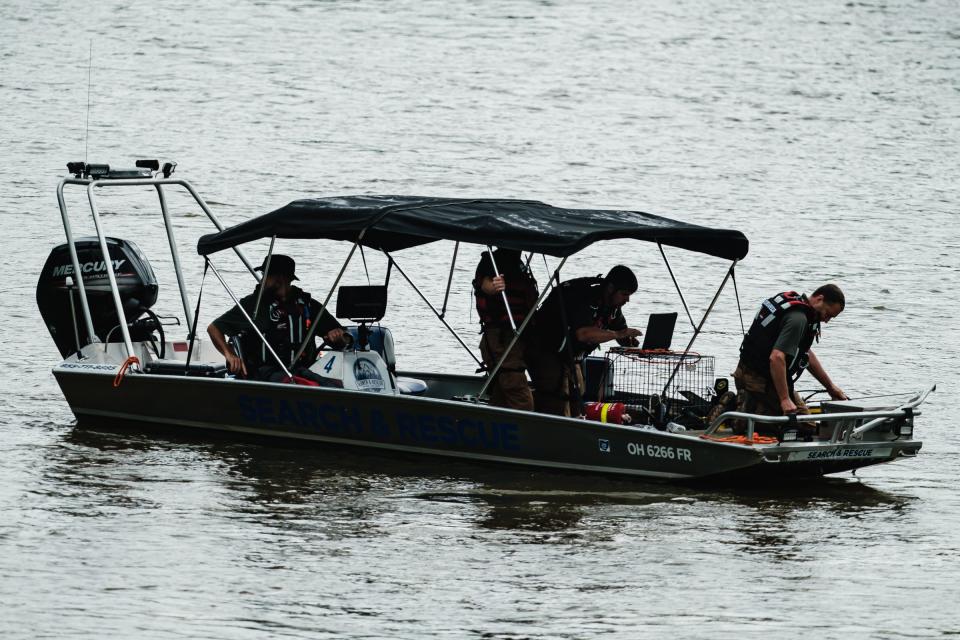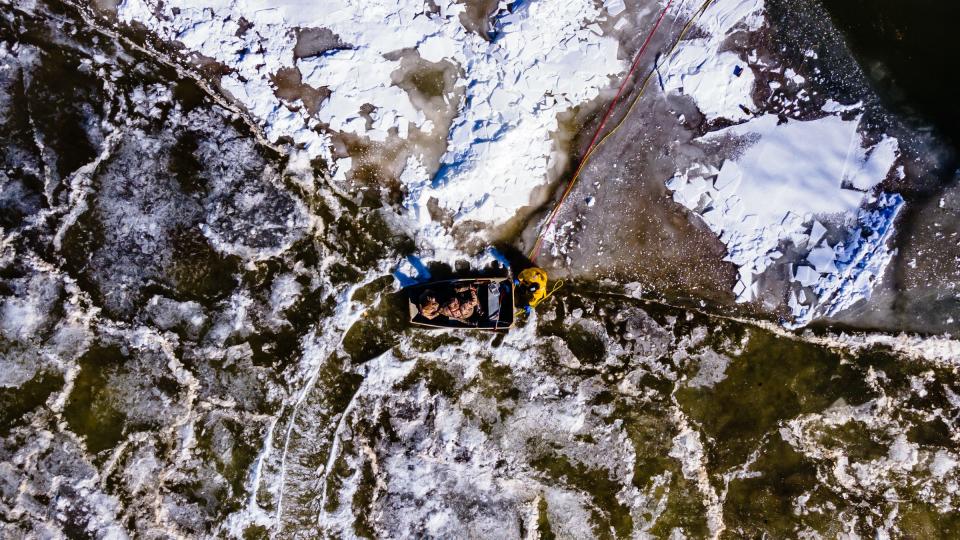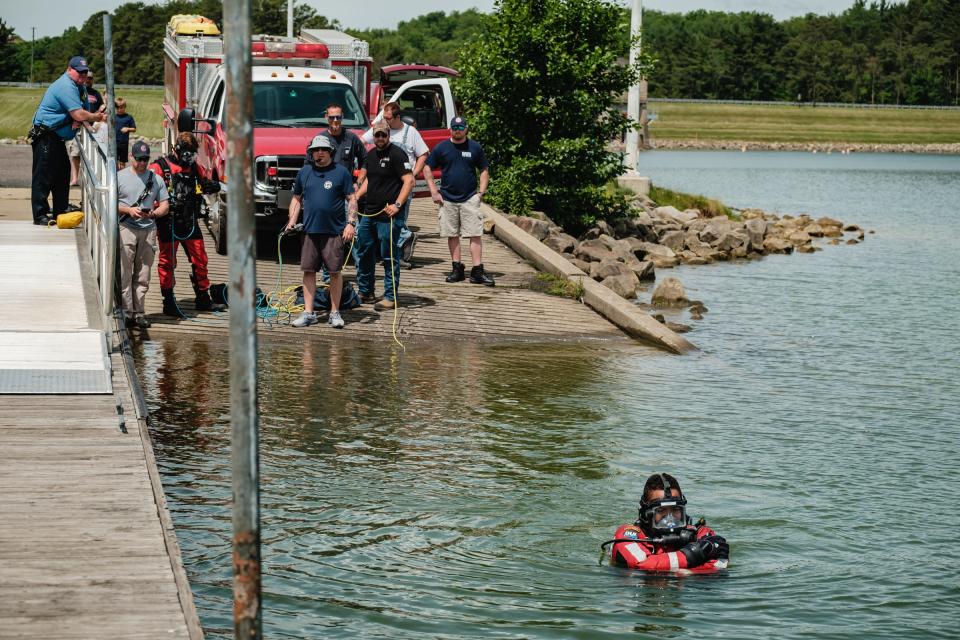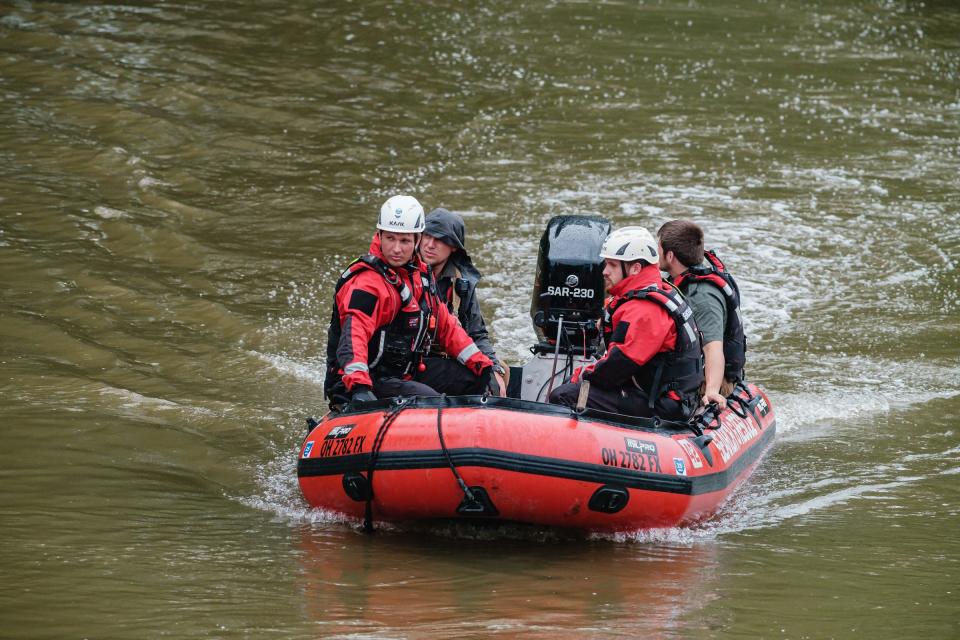Swimming in current is not that easy — Know how to stay safe on the Tuscarawas River; your life could depend on it

Canoes and kayaks look simple. Being much less complex than cars and even bicycles, they should be easy vehicles to use, right?
Looks can be deceiving.
Already this season, two men have lost their lives while paddling on the Tuscarawas River. A 72-year-old Dennison man drowned May 29 after his kayak capsized while he was boating with family in Gnadenhutten. A 25-year-old Baltic man died June 4 after his canoe flipped near Port Washington.

More: Personality profile: Mary Jo Monte-Kaser
More: Tuscarawas River Canoe & Kayak Race returns July 16
More: Body of missing Baltic-area man found in Tuscarawas River on Tuesday morning
More: Man dies Monday due to brain injury caused by drowning after kayak flips Sunday

The Times-Reporter turned to local paddler Mary Jo Monte-Kaser for advice on how to safely navigate the river in small boats. Her accomplishments include crossing the Panama Canal in April 2011 as part of a four-person canoe team. She previously taught an introductory paddling class as an instructor certified through the United States Canoe Association. She also was certified as a K-2 kayak instructor through the American Canoe Association. She is the race director of the Tuscarawas River Canoe & Kayak Race, scheduled for July 16 in Dover.

Monte-Kaser shared these points about paddling on the river:
• Wear a life jacket, and adjust it to be tight enough that it won't slip off. A life preserver can keep you afloat if you end up in the water, buying time for help to arrive or for you to get out of danger.
People are not usually such strong swimmers as they think they are, Monte-Kaser said.
"How many times have you seen where a young guy said, 'Oh, I'm going to swim across the river,' and then they drown," she said. "Swimming in current is not that easy."
Water weighs about eight pounds a gallon. Imagine the pressure you would be fighting if the flowing river were pushing its entire volume against your body.

• Stay off the river on windy days. The wind pushes against your body and your boat as if they were sails. Even a slight wind could be too much for a paddler to overcome, meaning the wind will tell your boat where to go, not you. Wind will also kick up waves.
"Even an 8 mph wind on Atwood Lake might be too breezy," Monte-Kaser said. "When in doubt, stay off the river."
• Realize that the river can be cold, triggering an involuntary gasping reflex in a boater who falls in. This creates a greater risk of drowning even for confident swimmers.
"I have fallen in the water in May. The water's still cold," said Monte-Kaser. "The water can be cold in August if it's right after a rain."
Cold water drains body heat up to four times faster than cold air, according to the National Weather Service. Cold shock and hypothermia affect your ability to think and act.
• Always get the weather report to know what could happen. Stay off the water when storms are expected. Watch for signs of unfavorable changes while boating, such as gathering clouds.
• Stay off the river when the water level is high, but understand that drowning can occur even in shallow water. Depth information is available online with a search for U.S. Geological Survey Ohio water data for the Tuscarawas River. Monte-Kaser will cancel the July 16 race if the USGS gauge below the Dover Dam shows the water is higher than 3.5 feet.
More: Link: USGS data for height of Tuscarawas River below Dover Dam
"A lot of drownings occur when the water is actually at a very normal level, not necessarily when it's at flood stage because most people can look at the river and say, 'Oh, my gosh. It's at flood stage, better stay away,'" Monte-Kaser said. "They need to know that the water is dangerous at all levels.
• Get some instruction, such as that offered by the Ohio Department of Natural Resources or Muskingum Watershed Conservancy District. The American Canoe Association offers water safety resources.
"I wouldn't downhill snow ski without instruction," Monte-Kaser said. "I wouldn't just strap skis on my feet because you could break both legs. But yet people will jump into a canoe or a kayak and just think, 'How difficult can it be? It's a canoe.'"
• Before boating on the river, practice using a canoe or kayak on a lake or pond. Make sure you can steer, stop and reverse course.
"Moving water takes you into things, and sometimes it's a lot faster than you realize. It's always faster than you realize," Monte-Kaser said.
"You need to play with the boat in still water to see, where is that point at which the boat flips over?" she said. "How far can you lean a boat before it goes in? Where are you stable? Where are you unstable? Practice falling out of the boat. Swim with your life jacket."
Boating partners need to have some skills to deploy, as a team, if they need to steer or stop suddenly. Members of a group should stay together.
"The river can be a fun place to have a good time paddling, provided you've made sure you have some skills. Don't go out on moving water without skills."
• Do not drink alcohol before or during boating. It impairs alertness and response.
• Be aware of potential hazards. Noise could be caused by disturbances in the water.
• Watch for and avoid "strainers," such as fallen trees. They will allow the water through, but not boats and people, which can get tangled in them.
"Those are potentially real killers," Monte-Kaser said. "A lot of times, the strainer is right where the fastest current is flowing, which is where — if you're not skillful at controlling your boat — your boat's going to try to go. It'll kind of follow that fastest current, and that's right where the strainer is, usually."
• Watch for eddies, found where an underwater object interrupts the flow of the current. The current in an eddy is flowing in the opposite direction from the main river flow.
"That's a place where it can actually capsize you and you won't know what happened to you," Monte-Kaser said. "The river ... there's more to it than what meets the eye. You've just got current flowing in all different directions."
• Wear shoes because the river bottom can hold unseen hazards, such as glass or concrete pilings and rebar from abandoned bridges.
• Put gear in sealed plastic bags, tethered to the boat and possibly attached to floats. Monte-Kaser leaves her phone on dry land.
• Make sure your watercraft has enough flotation capacity to carry the weight inside. An overloaded boat is more likely to capsize.
• Think about what you will do if a problem occurs, in the same way familes have a plan for responding to a house fire. Before entering the water, think about what you will do if you hear lightning, if a bad storm blows in, if someone falls in the water. What would you do if someone experienced an emergency where the river bank is steep, slippery and covered with thick, thorny underbrush? Keep essential medications, such as asthma inhalers or heart medication, available for members of the boating party who use them. Take a first aid kit.
• Know how to prioritize if you end up in the water. First, save yourself.
"If it's calm water, stay with the boat," said Monte-Kaser. "If it's not, the boat doesn't matter. You can retrieve that another time."
Let the boat go if it is headed for a strainer, she said.
"And then of course, the equipment is always last. Your water bottle, your cooler, whatever, that goes floating down the river, you can't worry about that stuff. You need to save yourself first because water's colder than you think."
What happens when I fall into cold water?
After the first 10-15 minutes, you lose control of your muscles, according to thesurvivaldoctor.com., which also notes:
• Your muscles will be weak and stiff, and you will not be able to hold onto anything like a rope or stick to help pull you out.
• As the body temperature drops, and is between 89.6-82.4 degrees, your shivering stops and your consciousness becomes impaired.
Reach Nancy at 330-364-8402 or nancy.molnar@timesreporter.com.
On Twitter: @nmolnarTR
This article originally appeared on The Times-Reporter: Safe paddling: Practice on lake, check weather, wear life jacket

